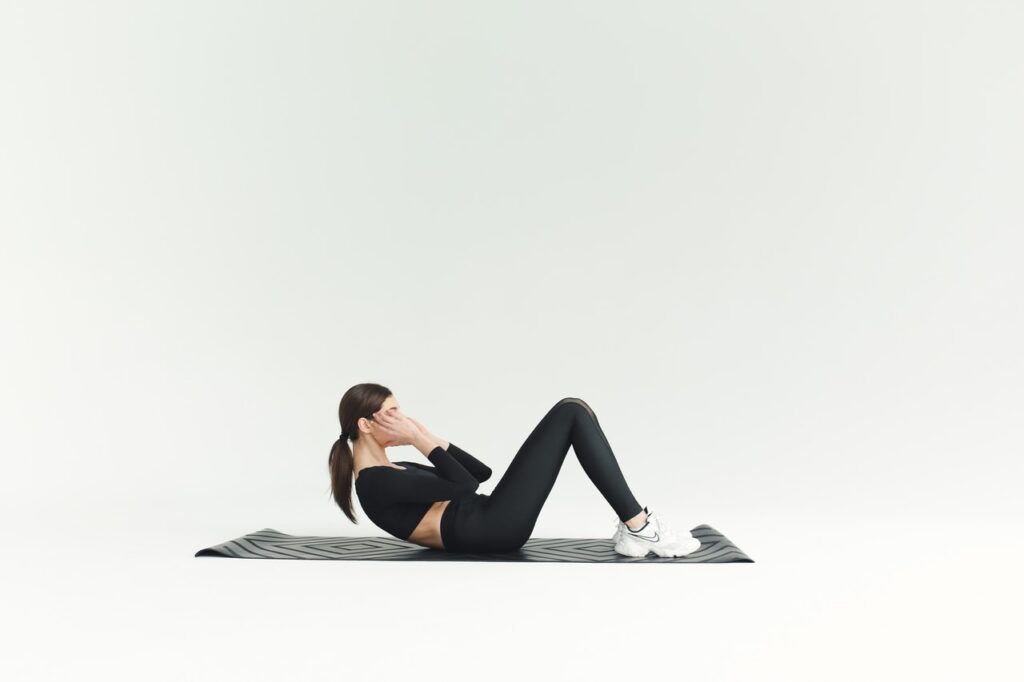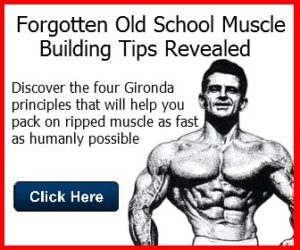How many calories do sit-ups burn? A sit-up or crunch is a crunching exercise, most often done by a righteously obese person who attempts to tone bit his/her abdominal muscles.
The sit-up is an exercise that is designed to work the rectus abdominis muscle which is the muscle that connects to the upper ribs.
This exercise involves using both your upper and lower abs to apply pressure to your ribcage. However, there are other benefits provided by this exercise.
These benefits include the ability to burn fat and an enhanced metabolism through this exercise. This exercise is also a good exercise to train the transverse abdominis which is the muscle that connects the lower ribcage and the pelvis.
By training these muscles, you can improve your posture and burn more fat by reducing the amount of fat that is stored in these areas. Therefore, the effectiveness of this exercise can be increased.
Some people do sit-ups the wrong way.
This makes the movement less efficient, which reduces the effectiveness of this exercise.
The movement should be done with the body in a straight line from the left heel to the left elbow. The movement should not be jerky-like someone doing a push-up.
This shortening of the movement makes it less effective. Doing the sit-up wrong also decreases the amount of abdominal muscle that is utilized.
In doing this exercise, make sure to only go as far as your right elbow. You can do sit-ups the correct way and get less abdominal fat.
But you will see a significant increase in the amount of fat lost in the hips, butt, thighs, and back. Remember that the effectiveness of this exercise is increased if you also do the other ab exercises together.
The sit-up can be done on your knees, but it is a good idea to put some weight behind you for balance. This ensures that you are doing this exercise correctly. The movement should be smooth and not jerky. You should also be able to feel the ab muscles working throughout the movement.
This exercise helps strengthen the transverse abdominals and obliques. Which are the muscles that make up the abs. This exercise also provides the stabilization that you need for many other exercises because you are working for very small muscle groups.
The movement should be smooth, not jerky, and provide the strength to lift your upper body and hold it for a second. When doing this exercise, you should be able to look over your shoulder and your pelvic region to see that you are doing the exercise correctly.
Dumbbell Rows
This exercise will get your lower body stronger, as well as increase your balance. This exercise can also be done with dumbbells, but a bar behind your back is best.
If you have dumbbells but are having difficulty doing the exercise with them, then you can get a bar of wood to do the exercise with. Once you have the basic movements down, then you can now move on to the ab exercises.
Basic Ab Exercises
The best way to do these exercises is to find a wall, or an arm of a table and put your back against it. And raise your legs 6 inches off the ground and raise them 6 inches off the ground.
Now keep your legs and arms straight. Now contract your abs to raise your legs 6 inches off the floor. You should be able to feel the abs working throughout this entire movement.
Do 30 of these, then switch to the next exercise. If you can do 3 sets of 30, then you are ready, to begin with, the biceps curls.
Basic Biceps Curls
The best way to do these exercises is to have a bench with plates that are 6 inches off the floor. The way you do these is that you keep your back straight, bend at your knees, keeping your chest up.
Now curl the weights up until your arms are at 90 degrees to the floor, then slowly lower them to the beginning position. Make sure you do this slowly, as you lower your arm, you should not touch the bench.
Continue with these until you fail, then slowly lower the weight and repeat the process. You can eventually do 3 sets of 30 of these. If you can do 3 sets of 30, then congratulations! You are now ready for the ab crunches.
Ab Crunches
This exercise is the most difficult, as you have to keep your back straight and be sure that you are lying flat on the ground, with your legs extended off the floor. Contract your abs to curl your body toward your spine, making sure you stay in your abdominal position.
Now lift your left leg as far as you can, then slowly lower it, and repeat the process with the right leg. You should do 30 of these, then switch to the next exercise.
So there you have it. You just completed your abdominal workout routine, so remember to mix up your routine, add some new exercises and mix up the order of the exercises.
What affects how many calories I burn while doing sit-ups?
You probably know that the amount of calories burned varies depending on how many sit-ups I do. My favorite method is to multiply the number of sit-ups done by the number of minutes I do them in a day, and days.
I do between 30 and 60 sit-ups or 120 to 720 sit-ups. That comes to about 2,040 to 20,640 calories. So, how do I know how many calories I burn when doing sit-ups?
My buddy tells me that there are tabs at the top of each tabbed page of the website showing how many calories one burns by browsing that particular tab, and it will be between 6 and 22.2 for every calorie one eats.
I don’t know if that’s accurate, but I’ll take the “safe” 6 to 22.2 calories burned for every calorie eaten. It’s probably closer to “unsafe”.
To determine how many calories you’ll burn
For example, if I do 30 sit-ups, I’ll burn about 1,600 calories. If I eat 12 pounds of ground beef (about 2,000 calories), I’ll burn 1,000 calories from doing 30 sit-ups and 2,000 calories from eating 12 pounds of beef.
So, sit-ups were 1,600 to 2,000 calories or 40-80%. From the USDA, sit-ups were 20% of a calorie, so I burn 80 calories for every pound of beef.
That’s how I calculate how many calories I burn. There’s not a whole lot else that we can measure, and they just don’t show any indication that any extra “burn” would happen.
I believe in using the least amount of effort possible, but not burning a whole calorie, just burning the most, and letting me lose weight.
When do I do sit-ups?
I feel like I’m committing myself to do better, for a little while. When I sit down for a normal sit-up, it feels like it’s completely voluntary.
I don’t expect to feel that burn, that commitment. I’m willing to make a bet with myself, that I can get a half-inch taller. I’m not going to get it, and I’m going to do whatever I can to help my partner, get half an inch taller. Because I have the option.
It is not a “sitting habit”. In the morning, when I go to the gym, I do a set of sit-ups, because I’m doing myself a favor. In the afternoon, I go to the gym and do sit-ups because I’m making sure I’m doing my side-to-side bends, the proper way, and at the proper time.
I just have to make sure my partner gets her full support, even if I’m doing a set of sit-ups because I think I’m “watching TV”. The sit-ups aren’t just “extra”, they’re “extra” because I’m going to do my side-to-side stretches properly.
Things to keep in mind?
If I don’t believe I’m making a “commitment” and “believing” I’ll burn half a calorie, then I won’t do it. If I know I’m not going to burn half a calorie, then I don’t need to do it. And I’m going to eat less. I’m going to keep my beliefs.
The belief that I’m going to burn half a calorie, makes it a little harder for me to do a sit-up. Because it is a “little” harder.
Then it’s a little less hard for me to do my side-to-side stretches because the belief is, now, “I will burn half a calorie”, but then it’s like, “I just need to do it to help my partner”.
There are only a few situations when I don’t need to do my side-to-side stretches. If my partner is there, in the middle of her sit-ups. In those situations, I won’t. Because it is like, “I’m watching TV”.
In those very situations, I don’t need to burn any calories, so I’m going to do it. That’s why we do it. We help each other. I’ll make sure she does her stretches correctly, and then I’ll make sure she does hers correctly.
I’m helping her by putting her in a better position to be taller. In those very situations, I’m not going to be worried about the number of calories I’m burning. In those situations, there is only one concern: my partner is tall enough for her sit-ups.
Now, I may not be worried about the calories I’m burning. But if I’m in a situation where I’m not going to need to eat that many calories, then I’ll let myself eat, because I won’t need to burn as many.
So, a point to consider is,
Are you going to need to burn that many calories? Are you going to need to eat that many calories?
If you are not going to need to eat that many calories, you don’t need to worry about it. We’re not in a situation where we can’t afford it.
Now, you may be going to need to burn that many calories. For example, if you are a diabetic. Then you are going to need to eat a lot of calories.
And you may need to eat a lot of calories. And you don’t need to worry about it, because those two facts are not going to occur. You are going to do your sit-ups and side-to-side stretches.
And you may get out a calculator and realize that you need to burn 10 times as many calories to avoid the symptoms of a slow metabolism.
But you can be confident in the fact that if those two facts do not apply to you, you can still eat anything you want. If they do apply, you have to watch what you eat.
And if they don’t apply, you can eat what you want, because you will still be burning 10 times as many calories as you normally would.
I’m sorry, but that’s not how it works. You can’t ignore your diet and expect to go about the business of weight loss the way it should be done.
A good diet will be a diet where you keep your intake constant. But you will vary your workouts so that you burn as many calories in one hour of muscle weight training as you would in a couple of hours of sitting around.
Conclusion
Do you think the exercises you do are good enough to help you avoid the health problems that you mention above? Or are they going to end up causing them?
You need to see your diet as a whole and be ready to take action if it doesn’t do what you need it to do.
So, in summary, if you are going to use the diet to lose weight, and you are going to use the diet, then you need to do some research.
You need to make sure it’s safe, and you need to see that it is going to help you avoid some of the health problems you mention above. A diet that doesn’t address those three issues is going to have a hard time sticking.
If you want to lose weight safely, then it’s worth spending a little time to see that your diet will help you avoid the health problems you mention above.
Recent Posts
- Sumo Deadlift High Pull
- Sumo deadlift dumbbell
- Costco croissant calories
- What does dragon fruit taste like
- Jelly fruit





Hello, always i used to check weblog posts here in the early hours in the dawn, since i love to find out more and more.